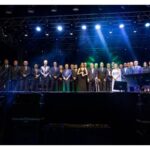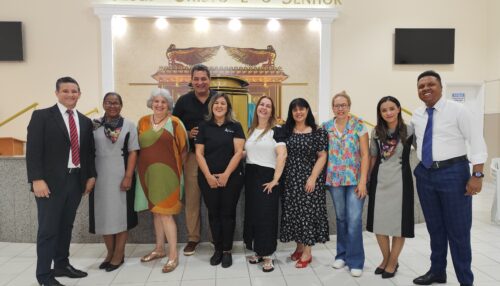How Cultural Merges Shape Modern Entertainment Trends
In our increasingly interconnected world, cultural interactions are no longer confined by borders or traditional boundaries. The blending of diverse cultural elements—known as cultural merges—has become a defining force in shaping contemporary entertainment. From music genres to blockbuster films and immersive gaming experiences, these cultural integrations reflect societies’ evolving identities and preferences. This article explores how these merges influence entertainment trends, supported by historical insights, modern examples, and future outlooks.
Table of Contents
- Introduction: The Role of Cultural Merges in Shaping Modern Entertainment
- Theoretical Foundations: Understanding Cultural Merges and Their Impact on Media
- Historical Context: Evolution of Cultural Merges in Entertainment
- Modern Examples of Cultural Merges in Entertainment
- The Role of Technology in Facilitating Cultural Merges
- Case Study: Big Bass Rock and Roll as a Reflection of Cultural Fusion in Gaming
- Non-Obvious Dimensions: Deepening Understanding of Cultural Merges in Entertainment
- Future Trends: The Continuing Evolution of Cultural Merges in Entertainment
- Conclusion: Embracing Cultural Merges to Enrich Modern Entertainment
1. Introduction: The Role of Cultural Merges in Shaping Modern Entertainment
Cultural merges refer to the process by which different cultural traditions, practices, and expressions intertwine to create new, hybrid forms. In contemporary society, these interactions are accelerated by globalization, migration, and technological advancement, fostering a dynamic environment where diverse cultural elements influence entertainment content. Such exchanges are vital for understanding evolving audience preferences and for fostering cross-cultural understanding through shared media experiences.
Entertainment acts as a mirror reflecting these cultural interactions. For example, the global popularity of K-pop exemplifies how Korean culture has merged with Western pop standards, creating a unique hybrid genre that resonates worldwide. The continuous evolution of trends driven by cultural influences underscores the importance of understanding these merges—not just as artistic fusions but as societal phenomena shaping collective identities.
2. Theoretical Foundations: Understanding Cultural Merges and Their Impact on Media
The concept of cultural hybridity explains how cultural elements blend to produce innovative content. Cultural hybridity is rooted in theories by scholars like Homi Bhabha, who described it as a space where identities are negotiated and redefined through cultural interactions. In media, this manifests as genre fusion, narrative crossovers, and aesthetic innovations.
Globalization further facilitates the flow of cultural elements across borders. Streaming platforms like Netflix enable access to diverse content, fostering cross-cultural storytelling and collaborations that would have been improbable decades ago. These technological shifts allow creators to experiment with hybrid formats, inspiring new entertainment paradigms that appeal to global audiences.
Hybrid identities—such as bicultural or multicultural personas—serve as creative catalysts. They inspire entertainment formats that reflect complex, layered experiences. An example is the rise of multicultural sitcoms or films that portray characters navigating multiple cultural worlds, enriching storytelling with authenticity and depth.
3. Historical Context: Evolution of Cultural Merges in Entertainment
Historically, entertainment has been a space where cultural merges can be traced back centuries. Traditional folk stories, for instance, often incorporated elements from various cultural backgrounds, evolving into modern multimedia adaptations. An illustrative case is the adaptation of fairy tales, which originated from diverse oral traditions, into films, animated series, and stage productions.
Early influences, such as the integration of African rhythms into jazz music or Asian martial arts in Hollywood films, laid foundational layers for today’s global entertainment landscape. These early cultural influences demonstrated that cross-cultural exchanges could create new genres and expand audiences.
Lessons from these historical integrations reveal that respectful, authentic representations foster broader acceptance and enrich creative expression. They also caution against superficial appropriations, emphasizing the importance of cultural sensitivity—principles still relevant in contemporary entertainment.
4. Modern Examples of Cultural Merges in Entertainment
Music: Fusion genres blending diverse cultural sounds
Genres like K-pop and Reggaeton exemplify how blending musical traditions from different regions can create globally appealing sounds. K-pop combines Western pop production with Korean vocals, dance styles, and visual aesthetics, leading to a worldwide phenomenon. Similarly, Reggaeton fuses Latin rhythms with hip-hop, resulting in a genre that dominates international charts.
Film and TV: Cross-cultural storytelling and international collaborations
Blockbuster collaborations, such as Marvel movies featuring diverse casts or Korean cinema gaining international awards, illustrate how cross-cultural narratives engage broader audiences. Netflix’s investment in international productions demonstrates how streaming platforms facilitate such merges, offering content like the Spanish series Money Heist or Nigerian films.
Gaming: Incorporation of cultural themes and motifs in game design
Video games increasingly incorporate cultural motifs, stories, and aesthetics. For instance, the game big bass rock & roll is a modern illustration of this principle. It integrates musical and thematic elements that draw from diverse cultural influences, offering players an immersive experience rooted in cultural fusion.
5. The Role of Technology in Facilitating Cultural Merges
Streaming platforms such as Netflix, Spotify, and YouTube have revolutionized access, enabling global audiences to explore diverse entertainment. These platforms promote cultural exchange by recommending international content tailored to viewer preferences, fostering curiosity and appreciation.
Social media acts as a catalyst for viral cultural phenomena. TikTok dances inspired by traditional African rhythms or viral challenges based on Asian pop music exemplify how social media accelerates cultural merges, often creating new trends overnight.
Interactive technologies, including virtual reality and augmented reality, are opening new avenues for cultural storytelling. Immersive experiences allow audiences to engage with different cultural environments authentically, deepening understanding and appreciation.
6. Case Study: Big Bass Rock and Roll as a Reflection of Cultural Fusion in Gaming
Big Bass Rock and Roll exemplifies how modern gaming integrates cultural elements into engaging experiences. Its gameplay features incorporate musical motifs from various cultures, blending them into a unified theme that appeals to a diverse audience. The game’s design demonstrates how cultural merges can be seamlessly embedded within entertainment formats, creating immersive and meaningful experiences.
The game’s thematic elements, such as musical styles, imagery, and storytelling, draw from a multicultural palette. Features like free spins and Scatter symbols serve not only as game mechanics but also as symbolic representations of cultural storytelling—highlighting moments of cultural convergence and shared heritage.
This modern example underscores the importance of thoughtful integration where cultural motifs are respected and authentically represented, fostering both entertainment and cultural education.
7. Non-Obvious Dimensions: Deepening Understanding of Cultural Merges in Entertainment
Beyond surface-level aesthetics, cultural merges influence audience perceptions and identity formation. Exposure to diverse cultural content can foster multicultural understanding, but it also raises challenges such as cultural appropriation versus appreciation. For example, when traditional motifs are used without context or respect, it can lead to misrepresentation and controversy.
Promoting cultural education within entertainment—through accurate portrayals and respectful storytelling—can mitigate such issues. Encouraging creators to engage with cultural consultants or community representatives helps ensure authentic representation, fostering a more respectful and meaningful cultural merge.
8. Future Trends: The Continuing Evolution of Cultural Merges in Entertainment
Emerging technologies like artificial intelligence and blockchain hold potential to create entirely new cultural amalgamations. AI-powered content generation can blend multiple cultural narratives dynamically, while blockchain can support authentic cultural artifacts in digital spaces, ensuring proper attribution and ownership.
Audience preferences are expected to shift further toward culturally diverse content, driven by greater global mobility and digital connectivity. This trend encourages creators to explore innovative, responsible ways of merging cultures, emphasizing sustainability and respect.
Ethical considerations, such as avoiding cultural exploitation and promoting cultural sustainability, will remain central. As cultural merges become more sophisticated, ongoing dialogue about respectful integration will be essential for fostering genuine understanding and appreciation.
9. Conclusion: Embracing Cultural Merges to Enrich Modern Entertainment
The ongoing journey of cultural merges enriches entertainment by fostering innovation, diversity, and cross-cultural understanding. As societies become more interconnected, embracing these interactions responsibly can lead to more authentic, inclusive, and compelling content.
Creators and consumers alike share the responsibility of promoting respectful cultural integration. By valuing authenticity and cultural significance, entertainment can serve as a bridge—uniting audiences through shared stories and experiences rooted in diverse traditions.
In sum, the future of entertainment lies in harnessing the power of cultural merges—where tradition meets innovation, and diversity fuels creativity, shaping a vibrant, interconnected cultural landscape.



























